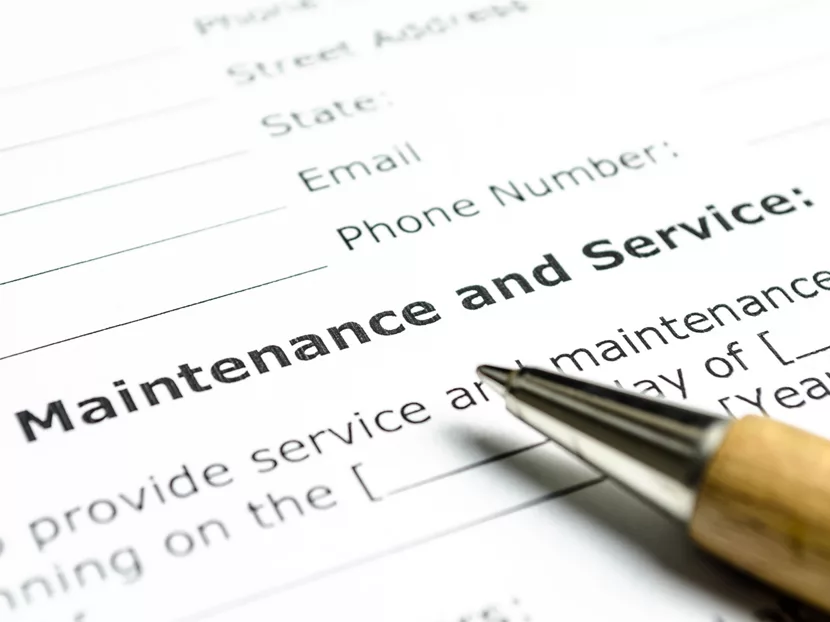I’m sure consumers have asked you, “Can you do better?” when it comes to your prices. Every consumer wants the best product or service for the least amount of money. It’s human nature.
Whether it’s a can of beans, a certain model of car or a piece of clothing, everyone wants to get the lowest price for any comparable product or service. For average consumers, buying habits are based on how far they can make their money stretch.
On the other hand, vendors want to get the most money for their product or service so they can maximize their profits. To do this, vendors must consider true operational costs and profit margins before developing their selling prices, since making a profit requires them to sell their product or service above their true cost.
It’s the reason I’m always harping on contractors to be aware of their true operational business costs. True cost is the foundation of successful business pricing. The structures of profit and sound business protocols are built upon that foundation.
After contractors establish their true cost, they must decide which profit margin to apply to it so they can earn the reward they deserve for delivering excellence to consumers, as well as for the risks they take in the delivery. If they do not earn the reward they deserve, then they don’t deserve to be in business because profit is the only reason for-profit businesses exist.
Offer Discounts
Since all consumers like discounts, discounting protocols must be considered when choosing the profit margin to apply to your true costs. One type of discount commonly asked for is the senior citizens discount.
But think about it. Do senior citizens need or deserve a discount? Seniors, who own a home, have more than likely no mortgage payment. Compare that to a young couple just starting out in life who bought a new home and probably have a mortgage payment to make every month. Logic makes it sound as if you also should consider a junior citizens discount.
But that brings to mind middle-aged parents with mortgage and college tuition payments. I guess it means a middle-aged citizens discount is appropriate to consider, too.
The truth is discounts are a business mechanism to entice consumers to purchase from your business. But you must properly apply the fundamentals of mathematics when choosing discount percentages. If you choose to apply a 10 percent profit margin to your true cost of a service, you cannot give consumers a 10 percent discount because you will not be able to earn a profit.
Remember, the only reason businesses exist are to make a profit.
The math
A profit margin is the percentage of the selling price. A five-hour, all-labor service that costs you $1,000 to produce, if you sell all tech hours all the time, will have a selling price of $1,111.11 when a 10 percent profit margin is applied ($1,000 ÷ 90 percent = $1,111.11). If you offer a 10 percent discount, you would be deducting $111.11 from the selling price. That results in recovering your cost if you sell all your tech hours all the time — but no profit dollars.
If you used a 20 percent profit margin, your selling price would be $1,250 ($1,000 ÷ 80 percent = $1,250). If you offered a 10 percent discount, the consumer would get a discount of $125. You would get a profit of $125 if you sold all tech hours all the time.
However, since contractors do not sell all their available potential revenue-producing hours all the time, it is imperative to take into consideration your unapplied labor factor when choosing your profit margin and calculating your selling prices.
That five-hour, labor-only task says your cost is $200/hour (your cost per hour may be more or less) if you sell all your tech hours all the time. If you only sell 75 percent of your available tech hours, the unapplied labor factor would increase the cost per tech hour to $266.67. In which case, the cost to you to produce the labor increases from $1,000 to $1,333.35.
In that case, the $1,250 price with a 20 percent profit margin would not cover your true cost without giving a discount. If you offer a 10 percent discount, you would only exacerbate an already bad situation.
It’s the reason discounting protocols and unapplied labor factors must be considered when developing your selling prices. It’s imperative to do the math properly before setting selling prices and offering discounts.
There also can be different levels of discounts. Instead of offering a discount focusing only on senior citizens, contemplate a discretionary discount that allows your techs to entice a certain list of consumer types you have developed for this discount and enhance the chances of closing the deal.
You might want to reward those who serve others, such as military, police, firefighters, medical personnel, volunteers, etc., with a larger discount as a thank-you for their services and to attract these groups to your business.
Let’s not forget your loyal clientele who keep you in business by always using your company for their needs and requests. They probably deserve an even larger discount.
When choosing your discount categories and amounts, you would be wise to consider the gorilla status of a consumer. An old joke asks, “Where can an 800-pound gorilla sit? Anywhere he wants!” Consumers have different gorilla weight levels of importance to your business.
Consumers who only use your business for their PHC requests have more value to your business than those who use other PHC firms and yours now and then. Loyal customers help to lower your operational cost/task because they only call your business when requesting service, while the one-time users give you the most cost/task.
Those loyal customers allow you to sell more of your available tech hours, which, in turn, lowers your true hourly cost because you sold more hours to divide your total true operational cost by.
Service agreement discounts
Consider selling service agreements with the biggest discounts to those consumers who are willing to pay your business for an agreement that provides the assurance they can count on you when service is needed or wanted. Selling service agreements brings money into your business.
With service agreements, you could offer an annual checkup for the system covered by the agreement. In the PHC industry, you could have a plumbing agreement to check the condition and operation of all plumbing fixtures, water heaters, water pressure, etc. A heating agreement would entail checking the function, ability and safety of heating equipment; a cooling agreement would require a check of air-conditioning efficiency.
Or combine them for a comprehensive agreement. When covering more than one system, the combined selling price will be higher, so you might want the discount to be higher.
Customers with service agreements from your home services company will be more likely than not to call you before your competition the next time they need or want service. The money you bring in from selling service agreements has a two-fold effect. It’s money you would not have brought in without selling the agreements, and it can help absorb some of the money you discounted if properly priced.
The key to successful discounting is making sure you never sell a service at or below your true cost after your discount is applied. It means you must be cognizant of your true costs in relationship to your original selling price and your final discounted selling price.
Regardless of which discount you choose to extend, discounts should be offered at the time you quote the price to the customer. I suggest saying something like, “The price to (describe the task) is $XX and I can offer you a (name the discount) of (percentage) off that price.” By doing this at the time you quote the price, the consumer will see you as honest and upfront.
If you offer the discount after the consumer refuses your original price, you will have given the consumer cause to not trust you. It will appear that the only reason you are offering the discount is because the consumer wouldn’t give you the work at the original price. Once you lose the consumer’s trust, you will have made your job more difficult.
You can also include discount offers in your advertising materials to entice consumers who have never used your company but fall into one of the discount categories.
I am well aware that identifying and calculating your true cost and taking into consideration your unapplied labor factor can be tricky. Determining your discount protocols may seem complex. And the terms and conditions of service agreements must be structured properly. But these issues can, and must be, addressed for your business to be successful if you utilize discounts and offer service agreements. If you need assistance, give me a call.






